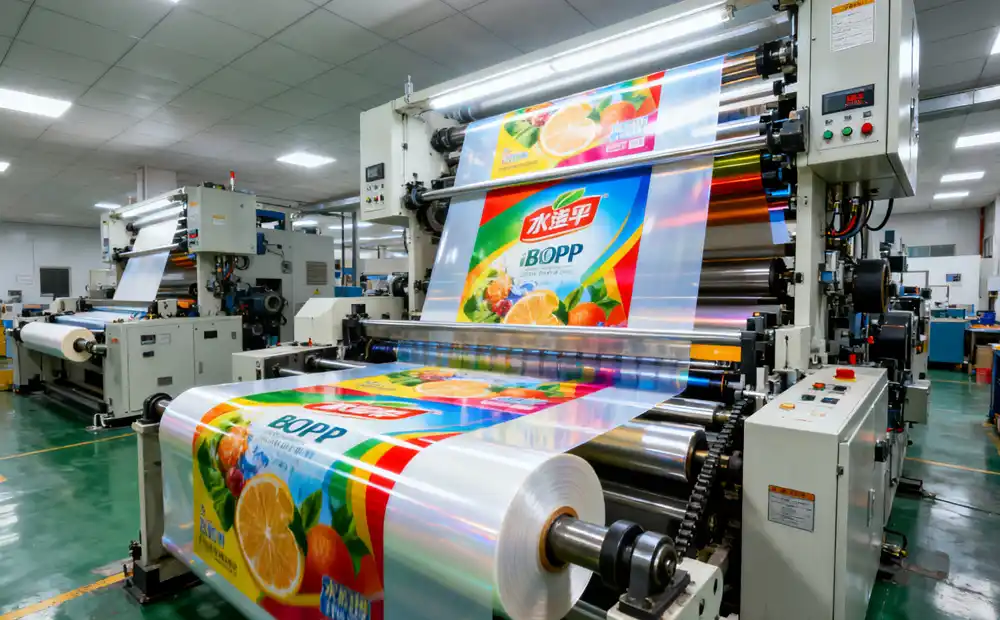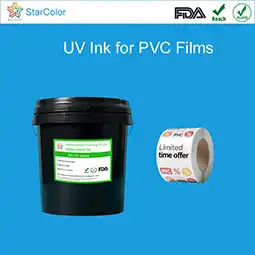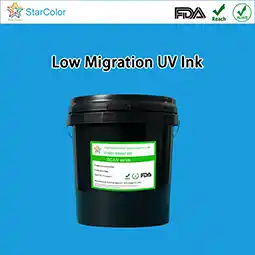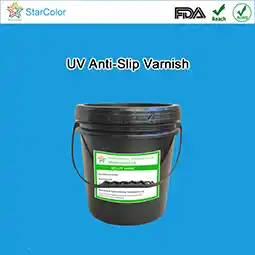Technical progress and market opportunity of water-based BOPP plastic ink
Date: Jan 23 2024 From: Star Color Views:
BOPP (Biaxially Oriented Polypropylene) films, known for their lightweight and strong weather resistance, are widely used in food packaging, personal care labels, and other applications. Traditional BOPP printing has long relied on solvent-based inks, but these emit high levels of VOCs (300–500 g/L), carry residual solvent risks, and increasingly conflict with global environmental policies. In recent years, water-based BOPP inks, featuring low VOCs and high safety, have overcome major barriers such as poor adhesion and weak abrasion resistance, and are gradually becoming a mainstream choice.
1. Technological Advances
BOPP films have a low surface tension (28–32 dyn/cm) and are non-absorbent substrates. Traditional water-based inks often suffer from poor adhesion, weak water resistance, and poor abrasion resistance. Recent innovations in resin modification and additive technologies have effectively solved these problems.
1.1 Resin Systems: From Single Acrylics to Hybrid Modifications
Early water-based BOPP inks used single acrylic resin systems with adhesion around 2B grade and color loss after just 20 wet wipes. Now, acrylic–polyurethane hybrid resins significantly enhance performance:
-
Stronger adhesion: Polyurethane introduces polar groups that form hydrogen bonds with BOPP surfaces. Combined with silane coupling agents, adhesion reaches 4B–5B grade, meeting high-speed labeling demands.
-
Improved weather resistance: Epoxy-modified monomers extend temperature resistance from –10℃–60℃ to –20℃–80℃, suitable for frozen foods and hot-fill beverages.
-
Performance data: Peel strength of hybrid resin inks on BOPP films reaches 3.5 N/15mm—twice that of traditional systems. After boiling at 60℃ for 30 minutes, no blistering or delamination occurs.
1.2 Additive Innovations: Tackling Leveling and Abrasion Resistance
Because of the smooth surface of BOPP, water-based inks are prone to cratering and slow drying, which weakens abrasion resistance. Additive upgrades provide breakthroughs:
-
Leveling agents: Polyether-modified silicones reduce ink surface tension to 32–34 dyn/cm, keeping the gap within ≤5 dyn/cm of BOPP, eliminating craters and reducing leveling time to 30 seconds.
-
Abrasion resistance: Micronized polyethylene wax forms a lubricating film, reducing the friction coefficient from 0.6 to 0.3. Rub resistance (500 g load) improved from 150 rubs to 500 rubs.
-
Drying aids: The introduction of tert-butanol accelerates water evaporation, cutting drying time from 5 minutes to 2 minutes, supporting high-speed presses (200–250 m/min).
1.3 Environmental Performance: Approaching “Zero VOC”
To meet global green printing requirements, water-based BOPP inks are optimized to reduce VOCs:
-
Alcohol-free formulas: Deionized water replaces ethanol and IPA, reducing VOCs from 100 g/L to below 30 g/L. Some high-end products achieve as low as 10 g/L, far below solvent-based inks.
-
Compliance & safety: Heavy metal content ≤0.001 mg/kg, compliant with FDA 21 CFR 175.300 and EU 10/2011 standards, making them suitable for food-contact BOPP packaging.

2. Market Opportunities
With stricter regulations and downstream demand upgrades, water-based BOPP inks are seeing rapid growth. The global market is projected to exceed USD 700 million by 2025, with a CAGR of 15%.
2.1 Policy Drivers: Regulations Enforcing Substitution
-
China: Under the “dual carbon” policy, many regions require VOC emissions in packaging printing ≤100 mg/m³. Solvent-based inks demand costly RTO incineration equipment, which small firms cannot afford. Water-based inks require only basic wastewater treatment, offering low-cost compliance. By 2023, water-based inks held a 35% market share in China’s BOPP sector, up 20% from 2020.
-
International: EU REACH restricts 236 hazardous substances. California’s Prop 65 caps solvent residues at ≤5 mg/m². Solvent-based inks face export limitations, making water-based inks a necessity for exporters.
2.2 Downstream Demand: Packaging Upgrades Driving Growth
-
Food packaging: BOPP dominates snack and beverage packaging. Rising demand for “solvent-free” safety led several well-known Chinese snack and beverage brands to fully switch to water-based inks. Market demand is growing at 20% annually.
-
Personal care labels: Cosmetics and detergents demand high gloss and eco-safety. Water-based BOPP inks deliver 70–80 GU (60° gloss), comparable to solvent-based inks, with no harsh odor, meeting high-end brand needs.
-
E-commerce logistics: BOPP courier bags exceeded 1 million tons of domestic use in 2023. Water-based printed bags are highly recyclable, aligning with “green logistics” policies, rapidly boosting market penetration.
2.3 Cost Advantages: Long-Term Economic Benefits
Although unit prices of water-based inks (USD 8–11/kg) are higher than solvent-based (USD 6–7/kg), total cost of ownership is lower:
-
Environmental costs: Solvent-based inks may cost >USD 28,000/year in environmental processing, while water-based only require basic wastewater treatment (~USD 4,000/year).
-
Material efficiency: Water-based inks achieve 95% utilization, while solvent-based lose over 15% due to evaporation and cleaning. A converter producing 10 million m² of BOPP labels saves about USD 21,000 annually.
-
Policy incentives: In some regions, subsidies of USD 280–700 per ton of water-based ink are offered, further reducing costs.
3. Application Cases
3.1 Food Packaging: Snack Manufacturer Upgrade
A snack producer using solvent-based inks faced complaints due to excess solvent residues. After switching to acrylic–polyurethane hybrid water-based inks:
-
Performance: Adhesion 5B grade, rub resistance 500 cycles, solvent residues undetectable.
-
Cost: Despite a 30% higher ink unit price, avoiding RTO investment saved ~USD 35,000 annually.
-
Market: Products passed EU testing, boosting exports by 40%.
3.2 Personal Care: Cosmetic Brand Premium Labels
A cosmetic brand chose high-gloss water-based BOPP inks for its premium line:
-
Performance: 80 GU gloss, ΔE ≤0.8, outperforming solvent-based systems.
-
Branding: “Printed with water-based ink” label strengthened eco-credentials, supporting a 10% price premium.
-
Production: Stable at 250 m/min, producing 500,000 labels daily, meeting demand.
4. StarColor Water-Based BOPP Inks: Core Features and Advantages
As a representative domestic solution, StarColor water-based BOPP inks align closely with these technological upgrades, achieving a balance of performance, eco-safety, and cost.
-
Adhesion & durability: Proprietary acrylic–polyurethane resin, combined with custom silane coupling agents, delivers 5B adhesion even on untreated BOPP (38 dyn/cm). Films withstand –25℃ flexing (100 times) without cracking and 85℃ hot-fill tests without blistering, suitable for frozen and hot-fill packaging.
-
Eco-friendly & efficient: 100% water-based, alcohol-free formula with VOCs as low as 8 g/L. Certified by FDA and EU 10/2011. Supports high-speed printing at 200 m/min without equipment modification.
-
Cost-competitive: Priced at USD 8–10/kg, 20–25% cheaper than comparable imports. Ink utilization rate reaches 98%, saving converters producing 10 million m² of BOPP labels over USD 28,000 annually.
Conclusion: Seizing Opportunities in Eco-Friendly Printing
With continuous innovation, water-based BOPP inks balance eco-sustainability and performance, driven by regulations and downstream market demand. Ink manufacturers must focus on resin modification and additive innovations to strengthen competitiveness, while converters should accelerate water-based adoption to cut compliance costs and capture the green packaging market. As technology matures, water-based inks are poised to replace solvent-based systems as the market mainstream, driving the packaging industry toward a “zero VOC, high safety” future.
 RU
RU EN
EN CN
CN















